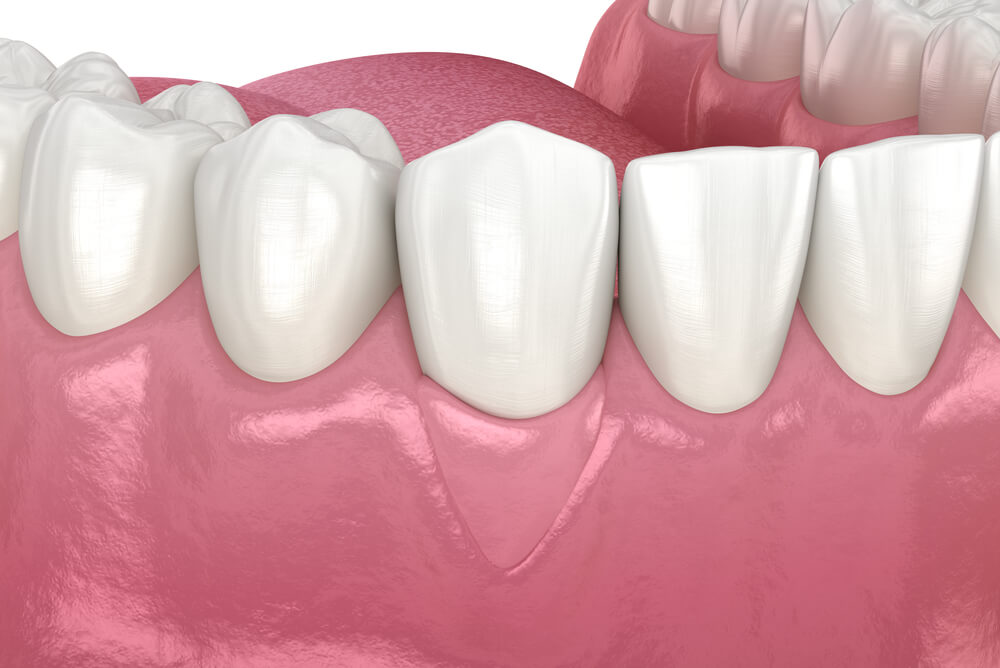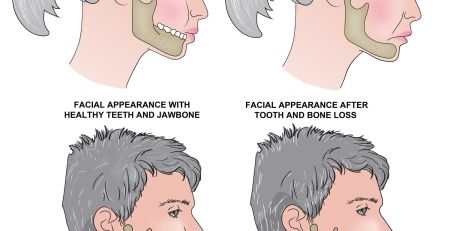Table of Contents
Understanding oral health is more than just taking care of your teeth. Gums, the soft tissue lining your mouth, are integral to dental health. Over time, for various reasons, this essential tissue can recede, exposing the roots of your teeth. This is where gum grafting, a standard restorative dental procedure, protects your smile.
Why is gum grafting needed?
Gum grafting, or gingival grafting, is a surgical procedure designed to reverse gum recession and protect your teeth from its potentially damaging effects.
This process involves taking gum tissue from your palate or another donor source to cover the exposed area. It effectively reduces gum recession, covers exposed roots, and prevents further recession and bone loss.
There are three common types of gum grafts:
Connective-tissue grafts
This is the most common method used to treat root exposure. A flap of skin is cut at the roof of your mouth (palate), and tissue from under the flap, known as subepithelial connective tissue, is removed and then stitched to the gum tissue surrounding the exposed root.
Free gingival grafts
Like connective-tissue grafts, free gingival grafts remove a small amount of tissue from the palate and attach it to the treated gum area. This method is commonly used in people with thin gums who need extra tissue to enlarge them.
Pedicle (lateral) grafts
Instead of taking tissue from the palate, a pedicle graft takes tissue from the gum around or near the tooth needing treatment. The gum is only partially cut away so that one edge remains attached. This piece of gum is then pulled over or down to cover the exposed root and stitched into place.
Why is it needed?

Gum recession is a common dental problem that is often overlooked because it happens gradually. However, when left untreated, it can lead to tooth sensitivity, an increased risk of tooth decay, and eventual loss.
Gum grafting plays an important role in protecting oral health and restoring smiles. It can help cover exposed tooth roots, which often reduces sensitivity and lowers the risk of root decay. The procedure also helps stop gum recession from getting worse and protects against potential bone loss. In addition, gum grafting can enhance the look of your smile by evening out your gum line and covering any exposed areas.
Risks Involved with Grafting
Like any surgical procedure, gum grafting comes with potential risks, although these are rare and typically mild when they do occur. They can include:
- Bleeding and swelling at the grafting site or the area from which the graft was taken.
- The graft tissue is not securely attached to the grafting site.
- Infection at the grafting site.
- Temporary or permanent sensitivity to hot or cold temperatures.
To mitigate these risks, it is critical to work with experienced dental professionals who can guide you through the process with care and precision.
The Benefits of Gum Grafting
Gum grafting does more than just fix receding gums; it helps protect your smile for the long run. Covering exposed roots reduces tooth sensitivity and lowers the risk of decay. It also restores a more natural-looking gumline, improving your smile’s appearance.
Beyond aesthetics, gum grafting helps prevent further gum and bone loss, which can lead to bigger dental issues later on. If you’re considering dental implants, it also strengthens the area to support long-term success.
In short, gum grafting is a smart way to boost both the health and appearance of your smile.
Who performs a gum graft?
A gum graft is typically performed by a periodontist, a dentist who specialises in preventing, diagnosing, and treating periodontal disease and placing dental implants.
Periodontists are experts in treating oral inflammation and receive extensive training in these areas, including additional years of education beyond standard dental school. They are also experts in caring for gums, ensuring they properly support teeth.
They are familiar with the latest techniques for diagnosing and treating periodontal disease and are also trained in performing cosmetic periodontal procedures, such as gum grafts.
Occasionally, oral surgeons or general dentists who have received additional education/training can also perform gum graft procedures.
Ensuring that the person performing the gum graft procedure is skilled and experienced is vital to ensuring optimal outcomes and minimising potential risks.
What is the difference between a gum graft and a bone graft?
A gum graft and a bone graft are two different types of procedures often performed in the context of oral health and dental implants. However, they serve different purposes and address various issues.
Gum Graft
As we have already discussed, a gum graft is a procedure to address gum recession. In this procedure, a periodontist takes a piece of gum tissue, often from the roof of the mouth or a tissue bank, and grafts it onto the areas where the gums have receded.
This helps protect the teeth or implants by providing them with the necessary supportive tissue, and it also improves the aesthetic look of the patient’s smile by covering any exposed roots.
Bone Graft
On the other hand, a bone graft is a procedure to address bone loss in the jaw. When a tooth is lost or removed, the jawbone at the extraction site also begins to recede, leading to a loss of bone mass.
This bone recession can make it difficult to place a dental implant, which requires a certain amount of bone for stability. In a bone graft procedure, a piece of bone from another area of the patient’s body, a bone graft material, or a synthetic bone substitute is used to encourage bone regrowth in the jaw.
A dental implant can be placed once the jawbone has sufficiently healed and new bone has grown.
Both gum grafting and bone grafting are essential procedures that can help ensure the success of dental implants and improve a patient’s oral health and smile appearance.
If you’re considering dental implants, your dentist or oral surgeon will evaluate your gums and jawbone to determine if either procedure is necessary.
Embrace A Brighter Smile with Amazing Smiles
Your smile is one of your most valuable assets—it deserves the best care possible. If you’re experiencing gum recession, don’t hesitate to explore gum grafting as an effective restorative dental solution.
Crown lengthening or composite bonding are also restorative dental options for gum recession.
Visit Amazing Smiles for a professional analysis and recommended treatment options for your dental needs. With a team of experienced professionals, Amazing Smiles is dedicated to ensuring that you receive the best possible care.
At Amazing Smiles, we accept all significant health funds and are preferred provider dentists, allowing you to maximise the most out of your private health benefits.
Don’t let gum recession hold back your smile. Make your appointment today, and let Amazing Smiles guide you on your journey to improved oral health.
Disclaimer: The information provided in this blog is intended for general educational and informational purposes only. It is not a substitute for professional dental or medical advice, diagnosis, or treatment. Always seek the advice of your dentist, doctor, or other qualified healthcare provider with any questions you may have regarding a dental or medical condition. Never disregard professional advice or delay in seeking it because of something you have read on this blog. Amazing Smiles and its contributors are not responsible for actions based on the content provided.




